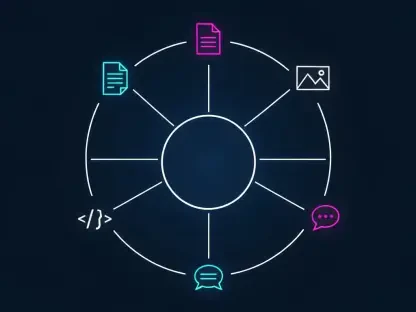The telecommunications industry is reaching a pivotal moment marked by its struggle with complex data integration challenges, largely due to outdated processes and inefficiencies. Businesses have been bogged down by the over-reliance on manual, tedious tasks like spreadsheet approvals, which delay launch timelines considerably. Years of implementing quick fixes have resulted in a chaotic mesh of disjointed point-to-point integrations, making it difficult for companies to streamline operations. While some have transitioned to centralized data stores, they frequently find themselves mired in infrastructure maintenance instead of focusing on core data tasks. Compounding the complexity are issues such as data duplication across systems and the difficulty of maintaining effective governance and security. Collectively, these factors contribute to an expensive, unwieldy architecture that stifles innovation and limits agility. In light of these persistent challenges, the integration of cloud technology offers a promising path to address these concerns and reshape the telco landscape.
The Power of Standardization
In addressing data integration challenges, the implementation of the TM Forum’s Information Framework, or Shared Information/Data (SID) model, emerges as a central theme. This framework offers a standardized information model and a common vocabulary, which can significantly aid in managing critical processes such as customer bill collections. By organizing billing-related data—like account details, payment plans, and collection statuses—into a cohesive format, telecommunications companies can achieve a seamless data management process. Standardization extends beyond individual platforms, creating a unified system that simplifies integration. This approach not only alleviates complications but also streamlines procedures, facilitating better data visibility and control.
Bridging the gap between framework and implementation has historically presented challenges due to varied data models and the necessity for custom transformations. Modern cloud services offer a solution by helping actualize the Information Framework’s potential effectively. For example, a cloud-based data lake can use scalable and highly available storage solutions to host the framework’s standardized business entities. Such advancements ensure unlimited storage capacity while maintaining the structure defined by the framework, paving the way for more efficient data management processes. Here, cloud technology plays a significant role in transforming the landscape by enabling businesses to utilize resources more effectively and concentrate on driving innovation.
Enhancing Governance and Security
The Information Framework’s structured approach aligns seamlessly with modern governance tools, creating a potent system for data management. Utilizing these tools allows businesses to enforce access patterns that conform to the framework while simultaneously maintaining robust security from broad domains down to specific attributes within an Aggregated Business Entity (ABE). This integrated governance model addresses both business needs and regulatory demands, ensuring comprehensive compliance with data security standards. By leveraging the framework and modern solutions, telecom companies can establish a more secure and accountable environment for their data, minimizing risks and potential breaches.
By integrating technology with the framework during the implementation of cross-domain processes, companies can achieve marked improvements. Data integration jobs can be set in motion by offloading data from source systems to centralized cloud storage. These jobs, conducted through serverless cloud-based workflow services, transform the data according to the framework’s specifications. This method not only ensures adherence to framework definitions but also maintains comprehensive audit trails and enforces necessary human approvals. Enhanced governance and increased transparency make it possible for telecommunications companies to ensure regulatory compliance and secure sensitive information.
A Path Toward Innovation
The telecommunications industry is confronting a critical juncture, primarily grappling with intricate data integration challenges resulting from antiquated processes and inefficiencies. Manual tasks, especially those involving spreadsheet approvals, have bogged businesses down by significantly delaying launch timelines. Years of implementing piecemeal solutions have led to a fragmented web of disparate point-to-point integrations, complicating efforts to streamline operations. Even those transitioning to centralized data stores often get stuck in maintaining infrastructures instead of focusing on essential data tasks. Adding to the complexity are issues like data duplication across systems and maintaining governance and security. Altogether, these factors culminate in an expensive, cumbersome architecture that hampers innovation and restricts flexibility. Recognizing these challenges, the adoption of cloud technology presents a potential solution, offering hope to transform and modernize the telecommunications landscape.









